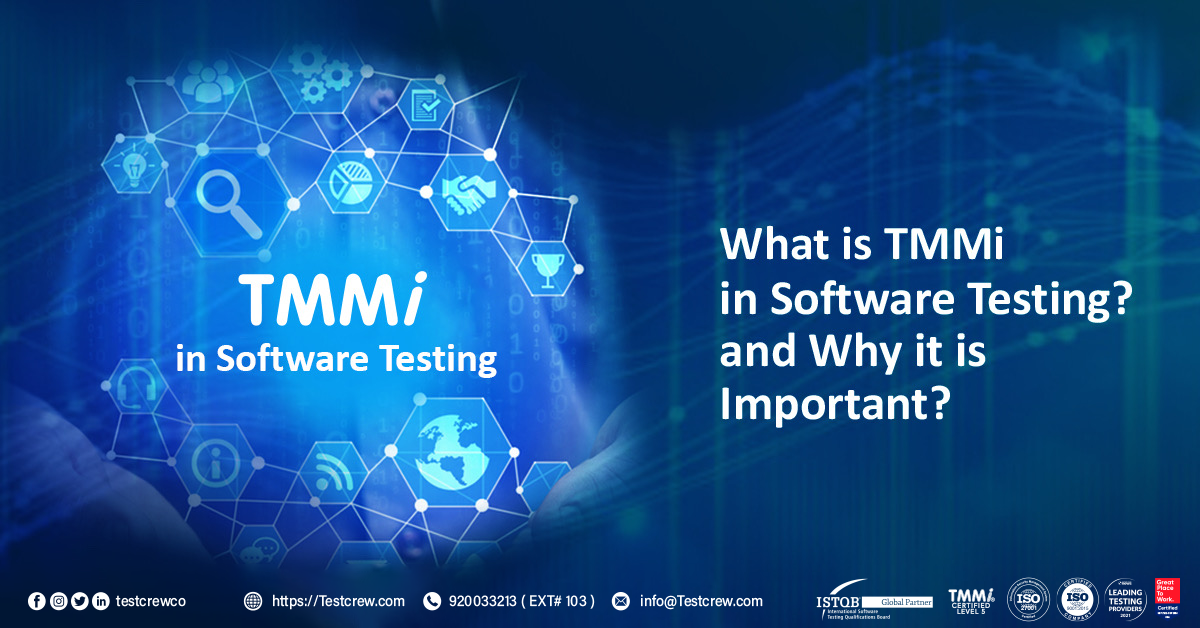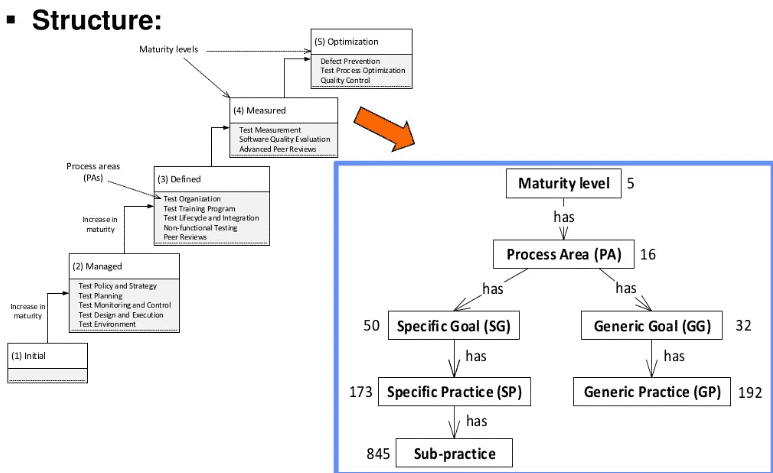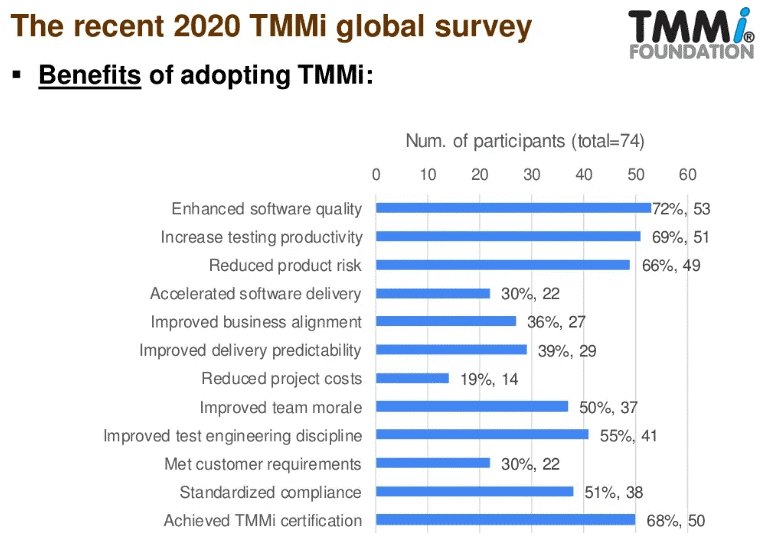
What is TMMi in Software Testing ? The stakeholders that demand permanent improvements in their software products are many – clients, investors, employees, and competitors. There are plenty of methodologies of software testing that are constantly improving to provide better products and make the software development life cycle easier and more efficient. And to determine […]
The stakeholders that demand permanent improvements in their software products are many – clients, investors, employees, and competitors. There are plenty of methodologies of software testing that are constantly improving to provide better products and make the software development life cycle easier and more efficient. And to determine whether testing is affecting quality in a positive manner or not, you need a standard model.
TMMi Foundation in 2005 and launched in 2010. This model was designed to help organizations optimize their testing. It provides a framework of the processes that need to be addressed, rather than following a set of events explicitly.
TMMi was built upon best practices created by the International Software Testing Qualifications Board (ISTQB), Capability Maturity Model Integration (CMMi), Institute of Electrical and Electronics Engineers (IEEE) and more. It is available in English, Chinese, French, Spanish and Portuguese.
Höhn (2011) defined a mind map of TMMi. The map distributes process areas, specific goals and their practices. This map was developed to simplify the TMMi understanding and to share information. There are 5 Levels that contain a total of 16 Process Areas. These are composed of Specific and Generic Goals, which, in turn, have Specific and Generic Practices. In addition, there are 843 Sub-Practices can be reviewed and assessed.

A maturity level within the TMMi can be considered as a degree of organizational test process quality. It is defined as an evolutionary plateau of test process improvement. Each level gradually develops an important part of the organization’s test processes. There are five maturity levels that define what to implement to achieve the given level: initial, managed, defined, measured and optimization, respectively.
To reach a particular maturity level, an organization must satisfy all of the appropriate goals of the process areas at the specific level. Note that all organizations possess a minimum of TMMi level 1, as this level does not contain any defined process areas or goals that must be achieved.
It is an informative component that provides details and references to help organizations start thinking about how to approach the required and expected components. As we mentioned, each maturity level, except level 1, consists of several process areas that indicate where an organization should concentrate to improve its test process. Each process area identifies a cluster of test-related activities. When the practices are all perfect, it will be a significant improvement in activities related to that area will be made.
In the TMMi, all process areas of the maturity level and the lower maturity levels must be satisfied to consider a maturity level to be achieved. For example, if an organization is at TMMi level 4, it has satisfied all of the process areas at both TMMi level 2, TMMi level 3 and TMMi level 4.2.3 Specific Goals.
They are required components that describe what an organization must achieve to satisfy a process area. Moreover, they are used in assessments to decide if a process area is satisfied and achieved or not.
They are also required components. They are called generic’ because the same goal statement appears in all process areas. A generic goal illustrates the characteristics that institutionalize the processes that implement a process area.
They describe activities that are considered substantial in achieving the related specific goal of a process area. Specific practice is an expected model component.
A generic practice is also an expected model component. It is called ‘generic’ because the same practice appears in all process areas. A generic practice is the description of an activity that is considered important in achieving the associated generic goal.
A sub-practice is a detailed description that provides guidance for interpreting and implementing a specific practice. It is an informative component that provides ideas that may be useful for test process improvement.

As illustrated, the survey had the same set of 12 response items. Enhancing software quality, reducing product risks, increasing test productivity, and improving the test engineering discipline are the greatest benefits of implementing TMMi. This confirms how TMMi can help organizations to be more effective, and efficient in the way they are doing their work. Furthermore, this indicates better management of testing is an important motivation to adopt TMMi. The internal factors of improved test engineering discipline and improved team morale are considered major benefits, and they can almost be a free bonus when implementing TMMi.
The least motivation is reduced project costs, and it is also reported to be the least experienced benefit of adopting TMMi. This probably shows that TMMi is not suitable for organizations where reducing project cost is significantly more significant than enhancing product quality.
After adopting TMMi, most organizations have accomplished the goals they set when starting to do a TMMi-based test process improvement project. This is confirmed by the high satisfaction ratio of the users. Here are some TMMi Benefits gathered by the assessment service providers over the years:
As mentioned above, TMMi can supply significant improvements and savings to organizations and their software projects. To get this, you have to be familiar with the TMMi model and be informed on how to identify improvement areas and the benefits of each optimization. In general, Itis a difficult task, but this will be a piece of cake with Test Crew and their professional team.
For this reason, training is critical, our trainers are experienced practitioners in their field and offer a wealth of real-world experience to ensure you get your high expectations.
So, what are the basic steps that TestCrew will help you start your journey with TMMi?
A company begins by identifying its current maturity level and understanding where it stands at present with Test Maturity. Are your testing processes active? Do you, for example, have a special mechanism for triaging bugs? TestCrew team will help you understand exactly how much you need to do to get to your destination.
The second step is defining Target Test Maturity Level and structuring the process that is going to be executed to get your goal. A company decides on what should be accomplished to satisfy a specific process area. Therefore, knowing why you want to get to a certain maturity level, and when, will help adjust your sights accurately.
Next, when you break down the steps you need to get to your goal, it becomes far easier to visualize and follow through. In other words, you need to walk before running. You can only go up a level when you achieve all the current level requirements.
Finally, any company should make a constant review, evaluation, feedback and measurable action outcomes resulting in further improvements.
The software community realizes that a zero-defect standard is unachievable, but the TMMI model helps at least to get close to that standard. In TESTCREW we will help you achieve that.